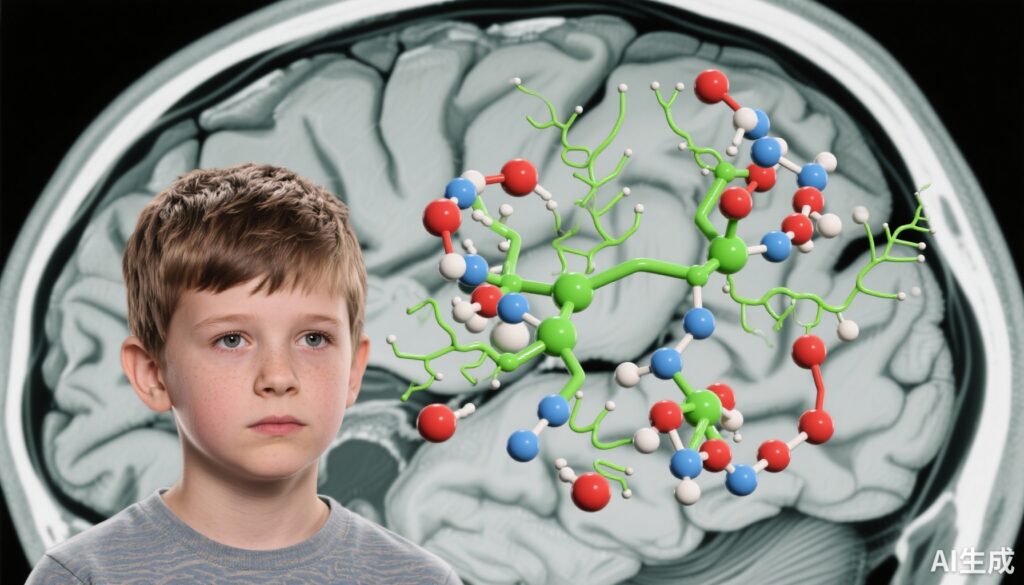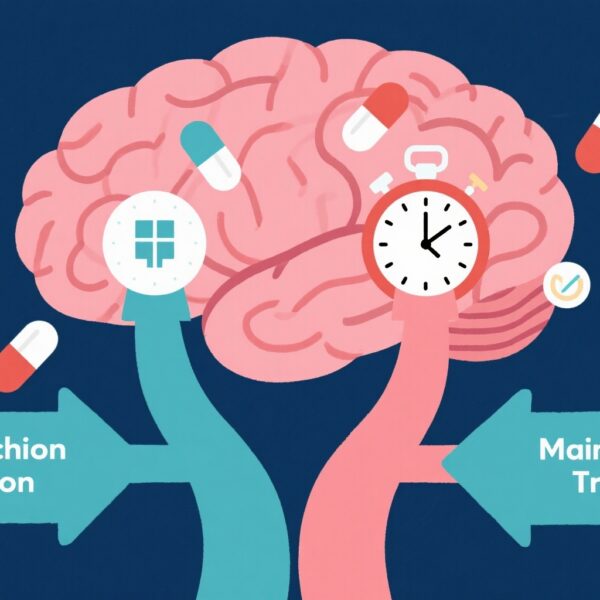Highlight
This randomized clinical trial evaluated memantine’s safety and efficacy for social impairments in youths with autism spectrum disorder (ASD), revealing a significant improvement in social responsiveness compared to placebo. Proton magnetic resonance spectroscopy (1H-MRS) identified elevated glutamate levels in the pregenual anterior cingulate cortex (pgACC) as a potential biomarker predictive of memantine treatment response.
Study Background and Disease Burden
Autism spectrum disorder (ASD) is a neurodevelopmental condition characterized by persistent difficulties in social communication and interaction, alongside restricted and repetitive behaviors. Social impairments contribute substantially to the long-term disability and reduced quality of life experienced by affected individuals. Despite advances in behavioral interventions, pharmacologic treatments targeting social deficits in ASD remain limited and inconsistent in efficacy. Glutamatergic neurotransmission abnormalities have been implicated in ASD pathophysiology, with proton magnetic resonance spectroscopy (1H-MRS) studies demonstrating altered glutamate levels in key brain regions such as the pregenual anterior cingulate cortex (pgACC), an area involved in social cognition and emotional regulation. These neurochemical alterations present an opportunity to develop targeted treatments and biomarkers to personalize therapy and optimize outcomes.
Study Design
This was a 12-week, placebo-controlled, double-blind, parallel-design randomized clinical trial conducted from January 2015 to July 2018 at an academic institution. The study enrolled 42 youths aged 8 to 17 years diagnosed with ASD without intellectual disability (IQ≥85), recruited from ambulatory psychiatry clinics. Participants were randomized to receive either memantine, an NMDA receptor antagonist hypothesized to modulate glutamatergic signaling, or placebo. The maximal dose was titrated up to 20 mg daily based on tolerability. Age- and sex-matched healthy controls provided baseline reference data for pgACC glutamate levels using 1H-MRS scans. The primary outcome combined a ≥25% reduction in Social Responsiveness Scale-Second Edition (SRS-2) total scores, an informant-rated measure of social impairment, and a Clinical Global Impression-Improvement (CGI-I) score of 2 or less, assessed by clinicians with ASD-specific anchoring. Secondary outcomes included safety, tolerability, and the relationship between pgACC glutamate levels and treatment response assessed through receiver operating characteristic (ROC) curve analysis.
Key Findings
A total of 42 youths initiated treatment (mean age 13.2 years, 76.2% male), with 35 included in intention-to-treat efficacy analyses (16 memantine, 19 placebo) and 33 completing the trial (16 memantine, 17 placebo). Memantine treatment was associated with a significantly higher response rate compared with placebo: 56.2% (9/16) versus 21.0% (4/19), yielding an odds ratio of 4.8 (95% CI, 1.1–21.2; P = .03). Memantine was well tolerated with no significant increase in adverse events relative to placebo, supporting its safety profile in this population.
Neurochemical analysis demonstrated that youths with ASD had significantly elevated mean pgACC glutamate levels compared with healthy controls (95.5 IU vs 76.6 IU; standardized mean difference -1.2; 95% CI, -1.8 to -0.6; P < .001). Notably, 54.0% of ASD participants displayed glutamate levels ≥1 standard deviation above the control mean. Among this subgroup, 80.0% of memantine-treated youths responded to treatment compared to 20.0% receiving placebo (odds ratio, 16.0; 95% CI, 1.8–143.2; P = .007). ROC curve analysis validated abnormal pgACC glutamate levels as a highly efficient biomarker to identify memantine responders.
Expert Commentary
This randomized clinical trial adds important evidence for memantine as a targeted pharmacologic intervention to ameliorate social impairments in youth with ASD without intellectual disability. The findings corroborate hypotheses implicating glutamatergic dysregulation in ASD social deficits and highlight a precision medicine approach utilizing pgACC glutamate levels as a predictive biomarker. The double-blind placebo-controlled design and combined subjective and objective outcome measures strengthen the validity of results.
Limitations include a modest sample size and a relatively short duration of 12 weeks, which may restrict assessment of long-term efficacy and safety. Future studies with larger cohorts and extended follow-ups are warranted to confirm durability of treatment effect and to explore memantine’s impact across diverse ASD phenotypes. Additionally, the generalizability to ASD youths with intellectual disability remains undetermined. Nevertheless, this study represents a significant step toward biological subtyping and personalized interventions in ASD.
Conclusion
Memantine is a well-tolerated and efficacious option for reducing social impairments in youths with ASD without intellectual disability. Elevated glutamate levels in the pregenual anterior cingulate cortex not only characterize ASD neurochemistry but also identify individuals most likely to benefit from memantine therapy. These findings support incorporating glutamatergic biomarkers in clinical decision-making and encourage further research on neurochemical-guided treatment strategies to address unmet needs in ASD management.
References
Joshi G, Gönenc A, DiSalvo M, Faraone SV, Ceranoglu TA, Yule AM, Uchida M, McDougle CJ, Wozniak J. Memantine to Treat Social Impairment in Youths With Autism Spectrum Disorder: A Randomized Clinical Trial. JAMA Netw Open. 2025 Oct 1;8(10):e2534927. doi: 10.1001/jamanetworkopen.2025.34927. PMID: 41032298.
Trial registration: ClinicalTrials.gov Identifier: NCT01972074.
Additional relevant literature: Veenstra-VanderWeele J, Warren Z. Intervention in the context of normal development: Insights from autism. Nat Rev Neurosci. 2015;16(9):592-605. doi:10.1038/nrn3984
Moses LM, et al. Glutamate receptor dysregulation in ASD: A review with implications for treatment. Pharmacology & Therapeutics. 2020;211:107540.


